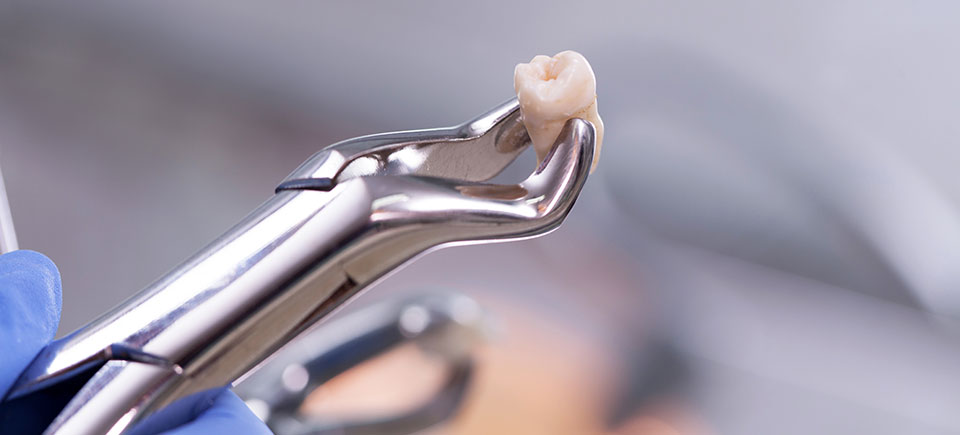Most of us have 32 teeth. Four of those teeth are what we call “wisdom teeth” or “third molars.” Wisdom teeth typically start to become noticeable sometime during late adolescence or early adulthood. In most cases, wisdom teeth are fully developed by your late 20s or early 30s. While some teens and adults never experience any problems with their wisdom teeth, others may require removal due to various factors.
You might think that wisdom teeth are only removed if they’re causing pain. But in a lot of scenarios, our South Gate, CA dentist recommends proactive wisdom tooth removal for the health of your neighboring teeth.
Here are just some of the things you’ll want to consider if you’re starting to see your wisdom teeth come in or have concerns about whether or not it’s right to have them extracted.
The Wisdom Teeth are Crowded or Impacted
One of the most common reasons for wisdom teeth removal in South Gate is overcrowding. When there isn’t enough space in the jaw for the wisdom teeth to grow in properly, they may become impacted. Impacted wisdom teeth can cause discomfort and pain and can also lead to other dental issues, such as damage to the next tooth or even cysts inside of the bone.
The only way to tell whether or not your wisdom teeth are impacted is to have a full-mouth X-ray, panoramic, or CBCT scan taken. At that point, our South Gate dentist can see exactly where the wisdom teeth are positioned and whether or not they’re erupting properly.
You’re Experiencing Swelling or Pain
If you’re experiencing swelling or pain in the back of your mouth, it could be a sign that your wisdom teeth are impacted or beginning to get infected. This pain can be severe and could even radiate to other areas of your face, such as your jaw or ear. If you’re experiencing any type of discomfort or pain in your mouth, it’s important to speak with our South Gate dentist right away to determine the cause and potential treatment options.
Keep in mind that it’s fairly normal to experience an off-and-on cycle of swelling during tooth eruption. Wisdom teeth are no different. But if the pain doesn’t go away, it isn’t going to on its own. Don’t try to mask the symptoms with an over-the-counter pain reliever. Many times, swelling and pain are due to an eruption cyst pressing against the surrounding bone, tooth, and gum structures.
There’s No Room for Your Wisdom Teeth to Erupt
In most cases, there is not physically enough room in the jaw for your wisdom teeth to erupt through the gums. This can lead to slanted teeth or impaction, which can cause discomfort, pain, and other dental issues, such as tooth crowding. In such cases, removal may be the best option to prevent further complications.
Since most of us have access to preventive dental care, the majority of our other teeth are healthy and intact. Before modern dentistry, it was fairly normal for people to have decayed or missing teeth; in those instances, wisdom teeth would be able to erupt more easily.
You Have a Partially Erupted Wisdom Tooth
A partially erupted wisdom tooth is when the tooth is only partly visible through the gums. Most or a majority of the tooth may still be covered. This can create an opening with a space between the tooth and gum. Over time, this area can trap food and bacteria between the gums and wisdom tooth, ultimately leading to infection or decay. Instead of treating the cavity or gum disease—because it’s only likely to keep recurring—the standard of care is to have the wisdom tooth removed.
Other Teeth are in Jeopardy
If your wisdom teeth are causing overcrowding or impacting other teeth, it may be necessary to have them removed to protect the health and alignment of your overall smile. Any active cavities or gum disease in wisdom teeth can also spread to the healthy tooth next to them. The best option is to remove the problem teeth before any infections expand into the surrounding spaces.
The Wisdom Tooth is Starting to Get a Cavity
Just like any other tooth, wisdom teeth are also susceptible to cavities. Mostly because they are extremely hard (if not impossible) to clean. If you have a cavity in your wisdom tooth, it is not usually recommended to fill the cavity. Why? Because recurring tooth decay is almost always the end result. Instead of treating the area of decay, we recommend removing the wisdom tooth before cavities “jump” to the surrounding teeth.
Your Wisdom Tooth Has Pericoronitis
Pericoronitis is a condition that can occur when the gum tissue around a partially erupted wisdom tooth becomes infected. Symptoms of pericoronitis include pain, swelling, and difficulty opening the mouth. If you’re experiencing these symptoms, it’s important to seek treatment from our South Gate dentist as soon as possible to prevent further complications.
How to Treat Pericoronitis Around a Wisdom Tooth
Treatment for pericoronitis typically involves removing any debris or bacteria from around the affected tooth and prescribing antibiotics to treat the infection. In the majority of cases, the wisdom tooth will also need to be extracted to prevent a recurring infection.
Symptoms of Impacted, Infected Wisdom Teeth
In addition to pain and swelling,
Typical symptoms of impacted or infected wisdom teeth usually include:
- Pain
- Facial swelling
- Red or inflamed gums
- Difficulty opening your mouth
- Bad breath
- Bad taste in your mouth
- Jaw or ear pain
If you’re experiencing any of these symptoms, it’s important to contact Reza Dental Care so that we can determine the cause and potential treatment options, if necessary.
Talk to a Dentist
If you’re experiencing any problems with your wisdom teeth, it’s important to speak with a dentist. At Reza Dental Care, we can perform an evaluation and take appropriate images to visualize the position and health status of your wisdom teeth. At that point, we can determine if wisdom tooth removal is needed and talk to you about your options.
Contact us today to reserve a wisdom tooth exam in South Gate.

 Available For Emergencies
Available For Emergencies